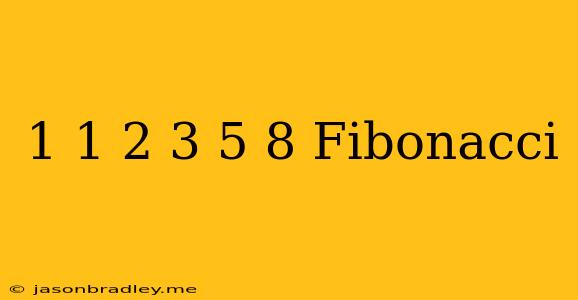The Fascinating World of the Fibonacci Sequence: 1, 1, 2, 3, 5, 8...
The Fibonacci sequence, named after the Italian mathematician Leonardo Pisano, commonly known as Fibonacci, is a series of numbers where each number is the sum of the two preceding ones. It starts with 0 and 1, and the sequence continues:
0, 1, 1, 2, 3, 5, 8, 13, 21, 34, 55, 89, 144...
This seemingly simple sequence holds a surprising amount of beauty and intrigue, appearing in various aspects of nature, art, and mathematics.
Nature's Hidden Code
One of the most fascinating aspects of the Fibonacci sequence is its presence in nature. From the arrangement of leaves on a stem to the spiral patterns in pinecones and sunflowers, the sequence emerges as a fundamental principle governing growth and organization.
For example, the arrangement of leaves on a stem, known as phyllotaxis, often follows the Fibonacci sequence. This arrangement maximizes sunlight exposure and minimizes overcrowding for optimal growth. Similarly, the spiral patterns in pinecones and sunflowers, where the number of spirals in opposite directions usually correspond to consecutive Fibonacci numbers, help optimize seed distribution.
Beyond Nature: The Golden Ratio Connection
The Fibonacci sequence is also closely related to the Golden Ratio, represented by the Greek letter phi (φ), approximately equal to 1.618. This ratio is found throughout art, architecture, and even human anatomy, often considered aesthetically pleasing.
The Golden Ratio emerges from the Fibonacci sequence as the ratio between consecutive terms approaches φ as the sequence progresses. In other words, as you move further down the sequence, the ratio of any number to its predecessor gets closer and closer to 1.618.
The Fibonacci Sequence in Art and Architecture
The Golden Ratio, linked to the Fibonacci sequence, has influenced art and architecture for centuries. Artists and architects have consciously or unconsciously incorporated the ratio into their creations, aiming to achieve aesthetic harmony and visual appeal.
Examples include the Parthenon in Greece, the Mona Lisa by Leonardo da Vinci, and many other works of art, where the Golden Ratio is evident in the proportions and composition.
A Journey of Exploration
The Fibonacci sequence, with its connection to nature and the Golden Ratio, continues to fascinate mathematicians, scientists, and artists. Whether it's the intricate patterns in the natural world, the aesthetic principles of art, or the elegance of mathematical relationships, this sequence remains a testament to the interconnectedness and beauty of our universe.
